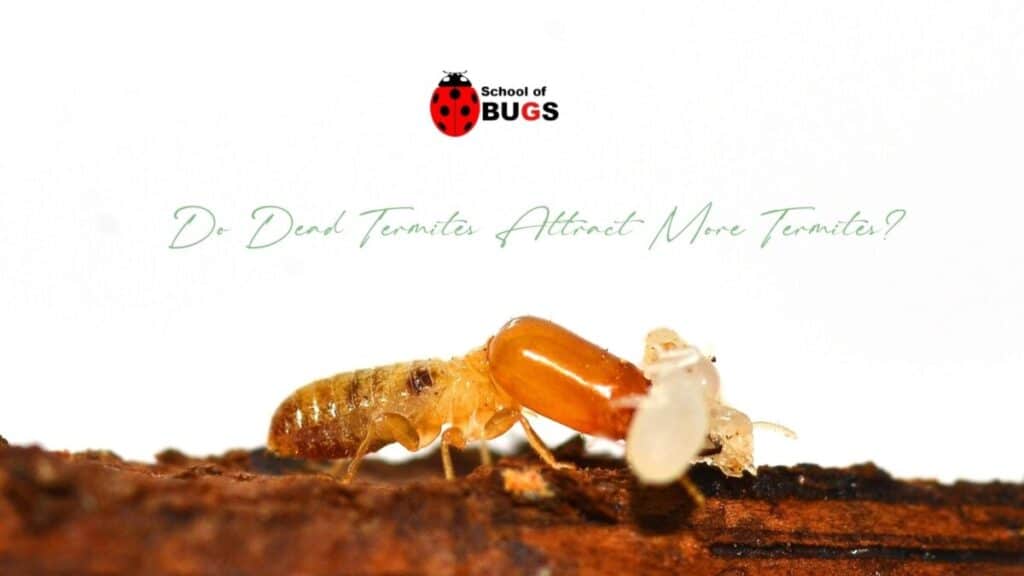
Freshly dead termites attract other termites. Termite communication is a complex system consisting of several groups of pheromones, which give off various signals.
Scientists have found that the pheromones released when in distress trigger termites of the same colony to follow the distressed termite’s trail.
The rest of this article will go into detail about:
- how termites they communicate
- what attracts them
- how to keep your yard and home termite-free
What Attracts Termites to Your Home?
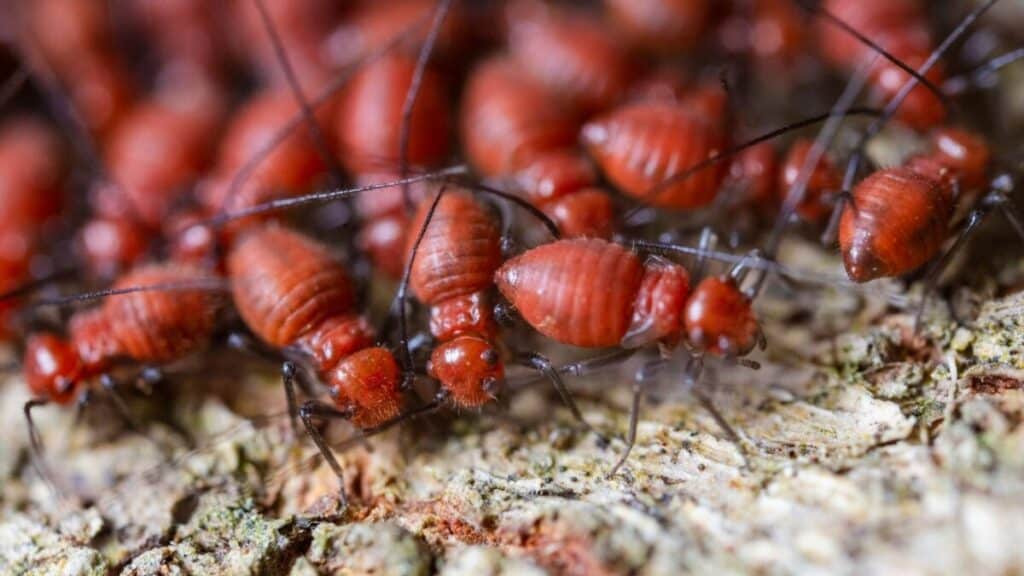
If you’re the kind of person who puts off home maintenance projects such as fixing leaky pipes, changing air filters, or getting rid of mold, you might be doing more harm than good.
DC Scientific Pest Control notes how termites are known among homeowners like the “silent destroyers” because of their ability to remain undetected for long periods as they chew through wood and building materials.
According to Orkin.com, any moisture inside your home can attract termites, such as leaky pipes, poor drainage, or inadequate air flow.
If you live in a humid climate, this can make infestation even more difficult to avoid.
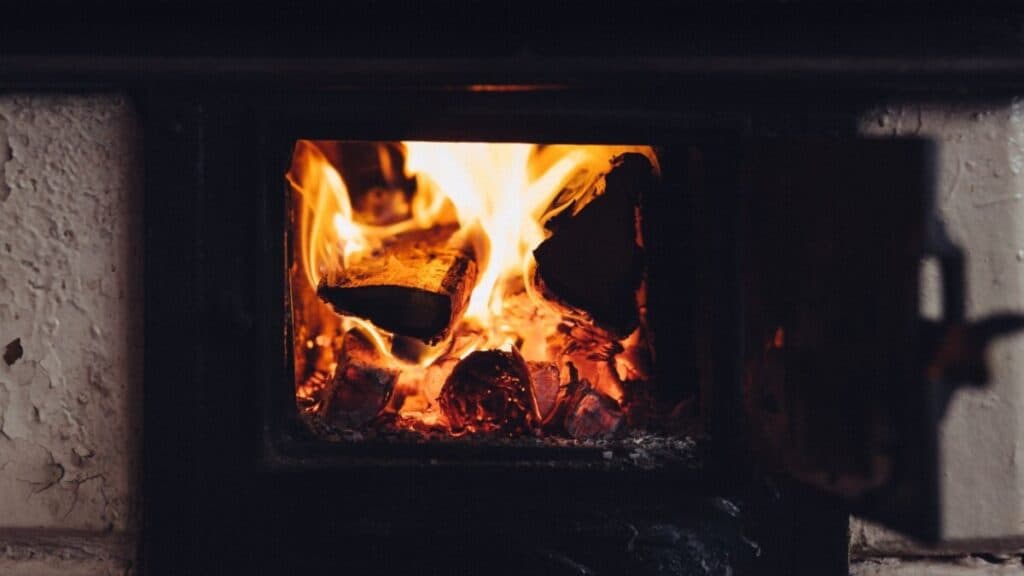
If you have a wood-burning stove and bring firewood into your house from outside, you might inadvertently be bringing termites inside your home that are living in the wood.
Your yard is no exception. Having dead tree stumps, mulch, or overgrown shrubs in your yard can attract termites.
This is even worse if you have mulch, shrubs, or firewood close against your house (such as stacks of firewood on your back porch), as it provides termites easy access to the wooden structure of your house.
Cracks around your windows and doors can also provide termites access to the inside of your home, through which they can build mud tunnels and access the inside of your house.
Once inside your home, termites can get trapped and die. Dead termites send off a chemical distress signal, which creates a vicious cycle with more termites homing in on the dead termites’ pheromones.
How do Termites Communicate with one Another?
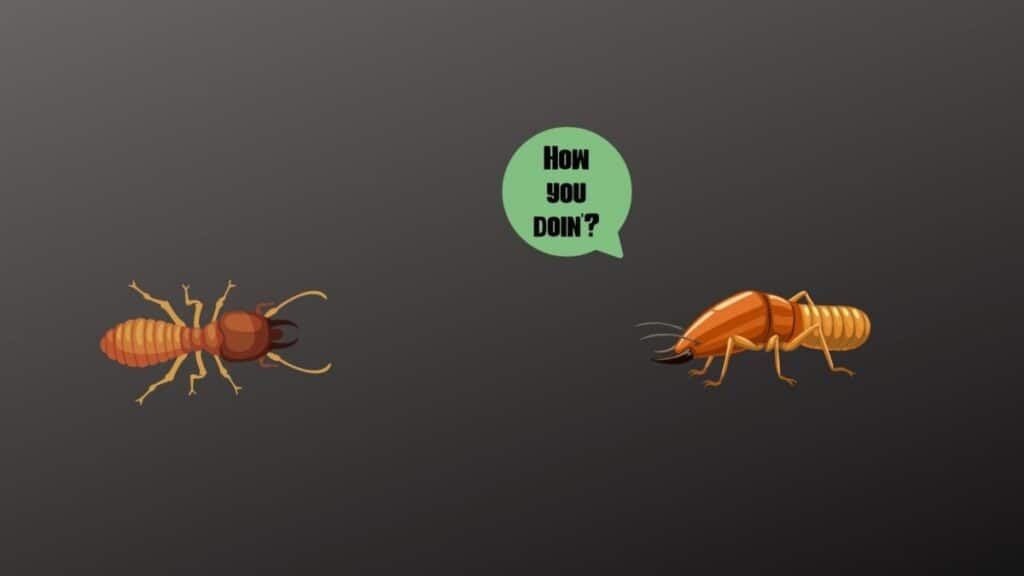
Scientists at the Kyoto Institute of Technology have categorized the various pheromones released by termites.
Termites use different pheromones to communicate with each other, and each category of pheromones serves a specific purpose. The types and purposes of these pheromones are listed below:
- Sex-pairing pheromones – emitted to attract mates during mating season
- Trail-following pheromones – when termites come across a new food source, they use trail-following pheromones to attract the rest of the colony to the location
- Aggregate pheromones – used by forager termites to attract their nestmates to a new site for an extended period, to colonize new area
- Alarm pheromones – emitted by termites when in distress, to attract other termites from the same colony to the site
- Soldier pheromones – only present in soldier termites, to differentiate them from worker termites
- Egg-recognition pheromones – used to protect the eggs
- Queen pheromones – only emitted by the queen of termite colony to signal presence and fertility
Dead termites – freshly dead, that is – send off a series of pheromones referred to as “alarm pheromones” that signal distress.
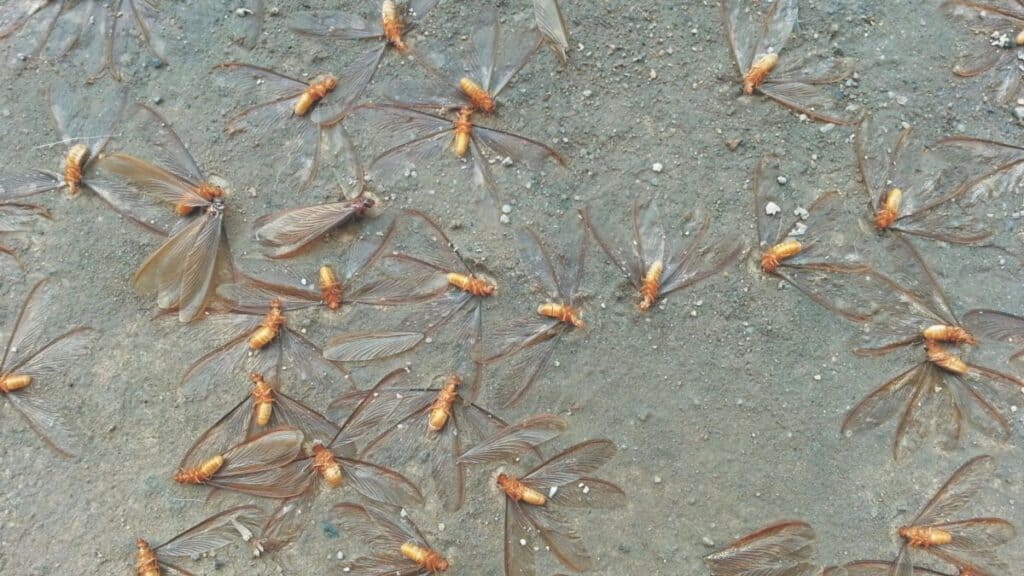
Alarm pheromones are secreted for a variety of reasons, such as the presence of an imposter nestmate or attacks from invading enemy termites.
When the other termites of the same colony pick up on the distress signal, they are programmed to follow the trail to the source of distress.
Why are Termites Attracted to Dead Termites?
Alarm pheromones are released when a termite is distress, which can be triggered by various threats listed above. The termites who pick up on the signal are programmed to follow the chemical trail.
The rest of the colony comes to the defense of the distressed termite.
The Kyoto Institute of Technology has found that soldier termites who pick up on the signal follow the trail and, at the site of distress, release a sticky substance at the distress site to immobilize an enemy, such as invading termites from a neighboring colony.
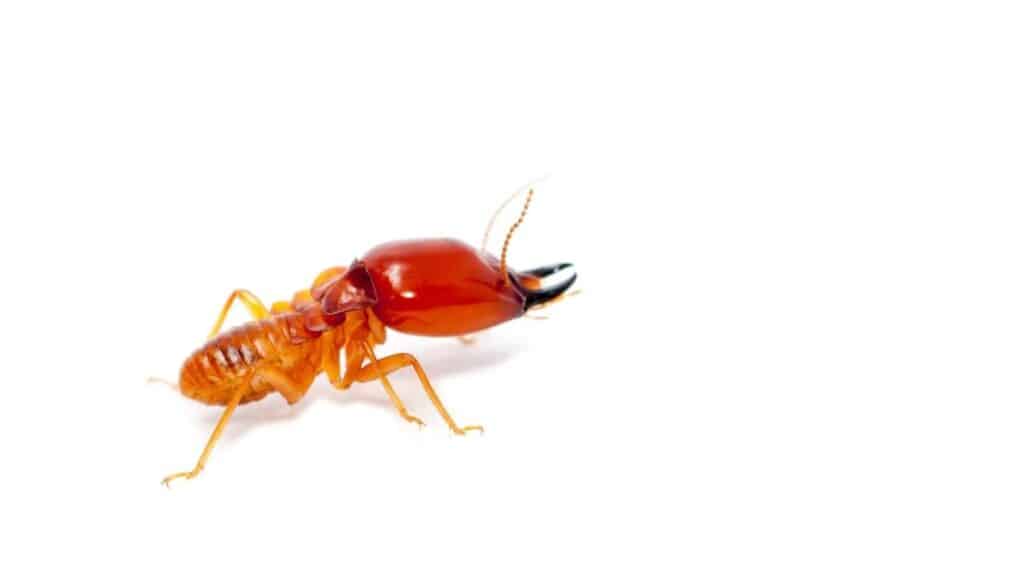
Upon receiving the chemical distress signal, soldier termites exhibit defensive behaviors while they follow the distress signal, such as opening and closing their jaws and banging their heads.
This is thought to make them seem more threatening to invaders.
Do All Termites Eat Wood?
While all termite species are attracted to wood, they differ in their preferences and infestation methods.
Orkin.com lists the three most common species of termites in North America as subterranean, dry wood, and damp wood. Drywood termites are more common in the southern US and don’t require that wood be damp for them to infest it, hence their name.
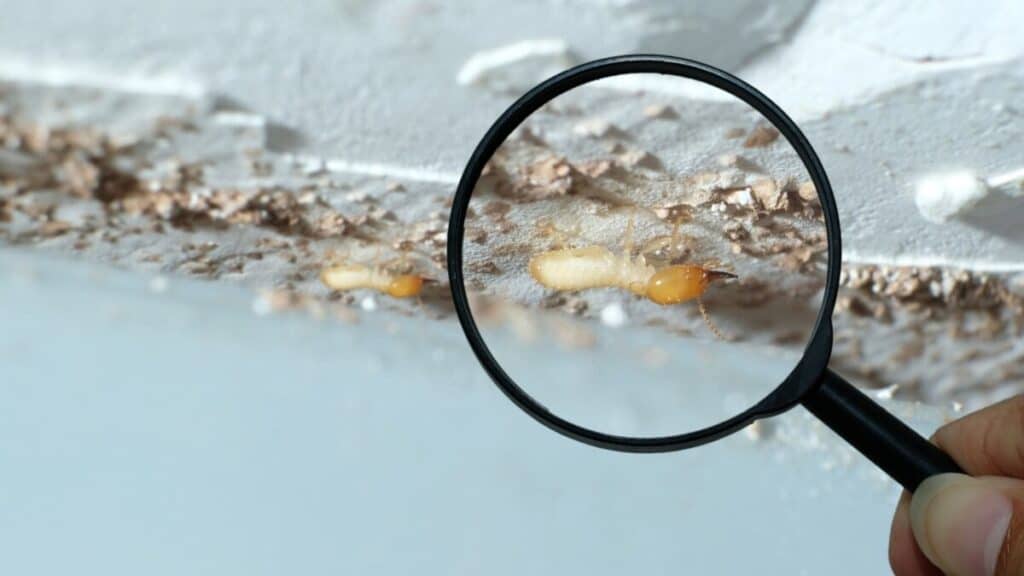
Dampwood termites live up to their name in that they are attracted to damp wood and usually live inside the wood they eat.
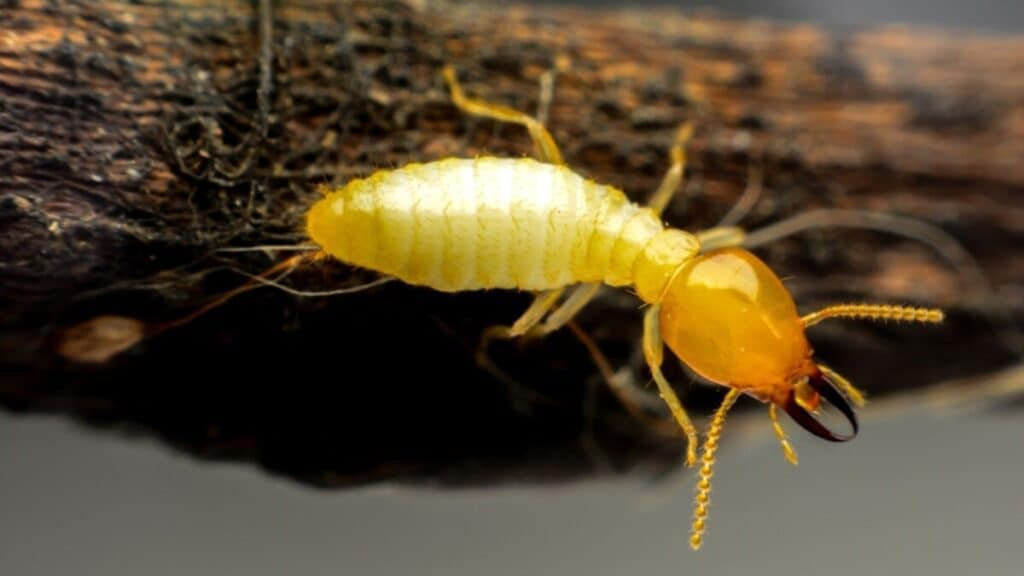
Drywood and dampwood termites live their entire lives inside the wood they infest and don’t require contact with the soil to thrive, unlike their cousins, the subterranean termites.
However, because subterranean termites travel through the soil, their colonies can grow much larger than those of drywood and dampwood termites.
Subterranean termites build “mud tubes” through which they travel between soil and the wood they infest.
How do I Identify a Termite?
Termites are often confused with flying ants. However, there are some differences between the two.
Termites don’t have a thorax. Rather, their ribbed abdomen is one solid piece with no visible waist.
Winged termites are in their reproductive phase, and both males and females have two pairs of wings that are similar in length.
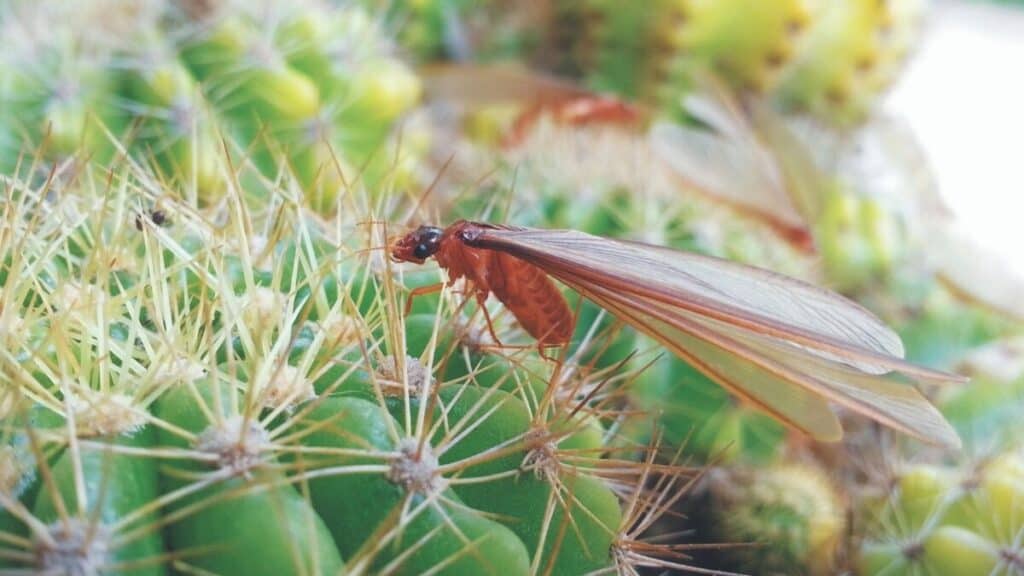
What are the Signs of Termite Damage?
Signs of subterranean termite damage include discarded wings, presence of mud tunnels, crumbling wood, sagging/bubbling walls, and any wood that looks soft, peeling, or sounds hollow.
Damage from drywood and dampwood termites is more difficult to identify, since both species live inside the wood they feed upon.
Their presence isn’t typically noticed until the damage becomes severe enough to warp the surface of their wood environment.
DC Scientific Pest Control identifies antique furniture as particularly susceptible to drywood termite infestations and notes that their presence isn’t often noticed until after the veneer on the furniture’s wood surfaces becomes cracked from termite activity.
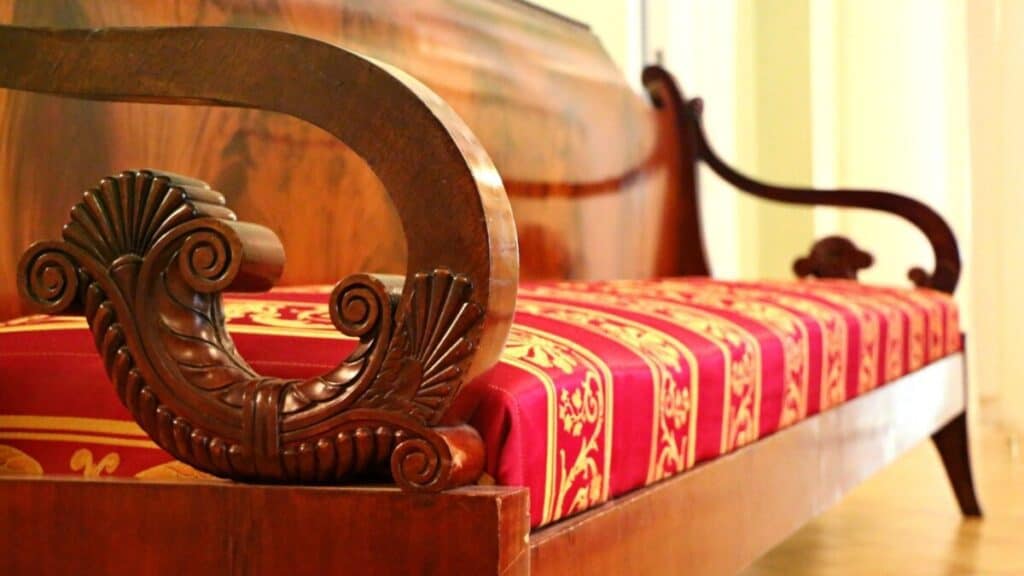
How Do I Get Rid of Termites?
To eliminate subterranean termites, Home Depot suggests treating the soil around your home’s foundation with an insecticide such as imidacloprid or fipronil.

Then, place termite baits around your home to lure termites to the foundation. Other chemical solutions are as follows:
- Directly treat wood with insecticide – especially helpful with drywood or dampwood termites
- Foam insecticides – inject into places (such as cracks around doors and windows) that liquid insecticide can’t reach
- Dust agents – Also known as “drill and treat” method, according to diypestcrontrol.com. Helpful in drywood infestations. Drill hole into infested wood, then inject dust insecticide into wood’s center.
- Fumigation – uses poison gas to kill termites, after people and animals are removed from infested property
If the thought of using poison to kill termites in your home worries you, there are several eco-friendly options, such as:
- Release nematodes (small worms that prey on termites) into the infested area
- Vinegar + lemon juice – the acid kills termites on contact, apply regularly
- Borax powder – sprinkle regularly in an infested area, apply regularly
- Orange oil – contains a compound that’s deadly to termites
- Wet cardboard – use as bait to lure out the termites already in your home, then burn or spray cardboard with vinegar and lemon juice

How Do I Prevent Termite Infestation?
Regular maintenance checks are the key to detecting termite damage early. Here are some things you can do to keep termites at bay:
- Check your home regularly for signs of leaky pipes or air conditioners, or any buildup of moisture.
- Keep gutters and rain spouts clean to avoid water buildup.
- Avoid stacking firewood against the house.
- Remove dead tree stumps from your yard and keep shrubs trimmed.
- Keep openings from outside into house covered. Home Depot suggests using a termite-resistant mesh to cover openings such as vents.
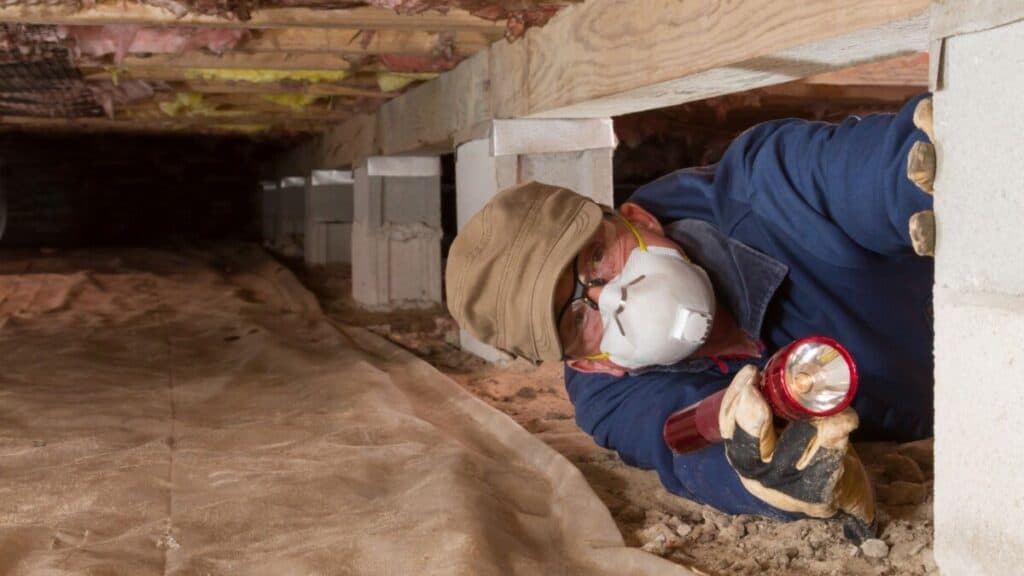
Does Having a Wood House Increase my Chances of Getting Termites?
While termites are primarily attracted to wooden structures, scientists have found that termites’ powerful jaws can chew through most materials – including plaster and metal siding.
If you don’t have a house constructed of wood, but you have wood cabinets and furniture, termites can chew through the building materials to get to the wood inside the house.
Many modern building materials were designed specifically to discourage termites. Pressure-treated wood is full of preservatives that deter termites since the pests prefer soft, untreated wood with high moisture content (unless you’re a drywood termite).
Composite materials are man-made building materials that are specifically designed to resist termites by including substances such as plastic that termites can’t digest.
Conclusion
While dead termites attract more termites, the alarm pheromones are far less tempting than the buffet of moist wood, easy access, and loose soil beneath a home’s foundation.
If you see dead termites inside your home, your primary concern should be the infestation that their presence indicates rather than worrying if the dead termites will attract living ones.
Fortunately, there are many ways to handle termite infestations, regardless of whether you use insecticides or opt for natural solutions.
Alright, that’s it for this article, here are a few hand-selected articles that you might also find interesting reads:
How To Spot and Prevent Termites from Causing Wood DamageWhy Do Termites Eat Wood? Facts And Figures
Are termites hard to get rid of? Yes! But These Tips Can Help
Recent Posts
Tiny Black Bugs in Bathroom NO WINGS: What They Are and What to Do!
Finding tiny black bugs in your bathroom can be uncomfortable, to say the least. Especially if they are persistent, or they appear in very large numbers, which they often like to do. When it...
Tiny Black Bugs in Plant Soil - What Are They & What To Do About It
A short horror story: You get a new houseplant. You do your best to take care of it. You’ve ensured that it has the right soil, the right amount of sun, it gets enough water. And then one day, you...

